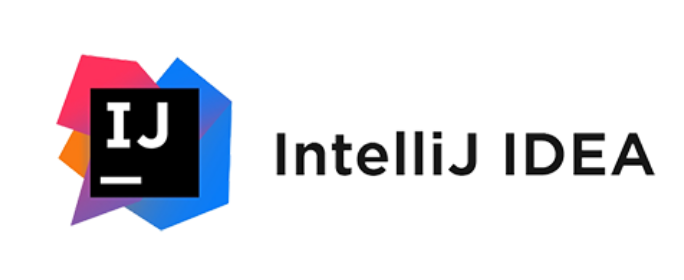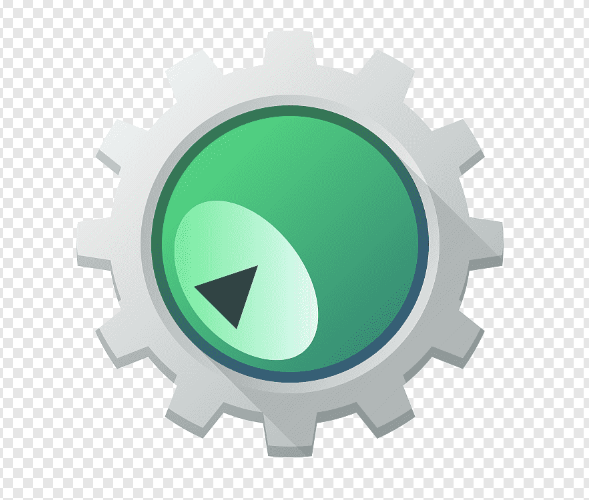Writing code is the main responsibility of the computer technology job of software programming. This blog post gives an in-depth definition of programming and software development, as well as the types of software programming. Whether you are just getting started in the software development world or you want to have comprehensive software knowledge, this article is for you.
What is programming?
The process of writing a set of instructions that a computer may follow to carry out particular tasks is known as programming. It entails developing code in a language that computers can comprehend so they can carry out different tasks and find solutions to issues. Modern technology relies heavily on programming to operate everything from websites and mobile apps to intricate systems like space exploration and financial services.
What is Software Programming with Example?
Writing computer code that makes computer software work is known as software programming. It might be difficult to distinguish between the overlapping terms used in the field of computer technology. Software development and software programming are two different things.
While development is the actual design of a program, programming is the process of carrying out development instructions. Computer programmers are those who write software.
Software Programming Examples
1. IntelliJ IDEA

Java is used to develop IntelliJ IDEA, which incorporates many features and adjustments to make programming simple. Developers that have experience with JetBrains tools will find it perfect.
The programming software includes integrated developer tools like version control and a terminal, as well as support for the microservices framework and smart code completion for many languages. It is compatible with Linux, MacOS, and Windows.
A great dark theme with lots of adjustment possibilities is offered by IntelliJ IDEA. It is a flexible program for backend Java, frontend JavaScript, and other applications. Additionally, it easily integrates with external technologies such as Git.
The prices of IntelliJ IDEA’s Enterprise Ultimate Plan, Enterprise All Products Plan, Individual Ultimate Plan, and Individual All Products Pack are $49.90, $64.90, $14.90, and $24.90/month, respectively.
2. Xcode

With Apple’s integrated interface builder and developer documentation, Xcode offers a comprehensive set of software development tools. It aids in the creation of software for iOS, MacOS, iPad, WatchOS, and tvOS.
Xcode programming software provides a fun live programming experience along with a multi-paradigm language called Swift. Since all you have to do to finish your design is drag and drop items, the procedure is simple.
Its interface builder displays your code in real-time while taking into account any modifications you make. This utility doesn’t require plugins; all you need to do to have a smooth experience is to maintain the IDE current.
Xcode will notify you if you make a coding error while using it. The running timeline of commits is shown in its version editor. Your projects will continue to be built, analyzed, tested, and archived by the server-side bots.
The software is compatible with the Mac OS and is available for free.
3. The Sublime Text

Sublime Text is a markup, code, and prose text editor. It features a minimap that displays the files and keyboard shortcuts for the majority of actions in a hierarchical view.
Written in Python and C/C++, this lightweight programming tool can easily handle all the hard lifting. You can make full use of the editor thanks to its command palette. You can customize every aspect of Sublime Text and write the code with much speed and efficiency. Linking the code to the other code pages is equally simple.
To meet your demands, Sublime Text offers a variety of settings. For example, you can acquire precise grammar advice, use text highlights for debugging, and increase efficiency with macros and shortcuts.
It has a free plan and a paid plan that costs $80 per license, and it is compatible with Windows, Linux, and macOS.
A company license costs $45 annually, whereas an individual license costs $99 per year.
4. Visual Studio

A programming tool called Visual Studio is used to create websites, web services, and mobile applications. It is used by small and medium-sized businesses to create computer programs.
It includes IntelliSense, an integrated debugger that functions as a source-level and machine-level debugger, a context-aware code completion capability, and code refactoring.
In addition to its robust user base and connectivity with Azure DevOps, Visual Studio boasts more than 20,000 extensions. Full-stack web development for Windows and macOS is provided by the tool.
Both a free and a premium plan are available, with the former costing $45 per month.
5. Notepad++

Notepad++ supports a variety of programming languages and functions as both an editor and a Notepad substitute. To guarantee quick execution and a compact program size, it makes use of STL and Win32.
Notepad, a programming application written in C++, is excellent for coding tasks. With the multi-tab editing capability, you can work on several projects at once. HEX and C++ sources are among the files that can be inspected at every stage of embedded software projects.
It’s an improved version of Microsoft Notepad with more options to suit your needs and better performance. Notepad++ is a free Windows application.
6. CodeLite
Free programming software for Linux, Mac OS X, and Windows is called CodeLite. The programming languages C, JavaScript, PHP, and C++ are supported. You may set it up to write code in the language of your choosing thanks to its easy-to-use interface.
Syntax highlighting, source browsing, code refactoring and completion, and project management are all aspects of CodeLite. It facilitates integration with cscope, UnitTest++, and Subversion. This program provides a lightweight framework for C++ unit testing.
7. KDevelop

Both Linux and Windows are compatible with KDevelop. It can manage any project, no matter how big or little, and is based on open-source technologies.
The KDevelop programming package includes PHP, Ruby, and Python plugins, as well as parser backends for OpenCL, C++, JavaScript, and Objective-C.
Fundamentally, it combines a sophisticated editor with semantic code analysis to provide an advanced programming experience. For superior results, it also interfaces with a number of documentation sources. KDevelop is open-source and free.
8. Komodo
Komodo is a programming tool compatible with Linux, Windows, and Mac OS X. It makes use of the Scintilla and Mozilla code bases.
Code refactoring, syntax highlighting, autocomplete, and other features are all included in Komodo’s robust editor. Numerous programming languages are supported by it, such as SQL, JavaScript, PHP, Go, Perl, Ruby, and Python.
You can examine, debug, and test your code using the editor’s visual debugger. You can use code browsing, database explorer, and support for several source code control systems with the commercial edition.
Komodo offers a free plan, an enterprise plan based on quotation, and a team package for $84.
Types of Programming Software Language
1. Python
Python has a multitude of uses as a programming language. It excels in web development, automation, prototyping, data analysis, and visualization. Because of its open-source nature and versatility, it has become extremely popular among software developers who can use a variety of programming paradigms. Notably, Python is especially approachable for prospective software developers or engineers seeking a starting point because of its grammar, which is comparable to that of the English language. As a result, there is a constant need for Python developers, and there are many attractive career opportunities, such as data scientists, software engineers, and artificial intelligence researchers.
2. Java
Java, an incredibly popular programming language known for its object-oriented structure and remarkable Write Once, Run Anywhere (WORA) features, is owned by Oracle Corporation. Java is widely used in big data management, online and application development, and as the foundation of well-known platforms like Google, Amazon, Twitter, and YouTube. It is useful in a wide range of applications.
Its importance is further evidenced by the desire for new frameworks like Spring, Struts, and Hibernate. There are numerous learning opportunities and plenty of help from other programmers in the large global community of millions of Java developers. Even though learning Java can be difficult at first, experienced developers who are fluent in the language are still in great demand.
3. JavaScript
A popular programming language for online development, JavaScript provides exceptional flexibility and seamless interoperability with other languages, especially when used with front-end frameworks like React and Vue.js. It is an essential tool for creating interactive and responsive websites. As a result of its extensive use, prospective JavaScript learners have access to a wealth of educational resources. JavaScript’s adaptability also includes server-side implementation, mobile app development, and front-end and back-end development. The introduction of Node.js enhanced its advantages by making it a great option for developers working on a variety of projects to build microservices and APIs.
4. C#
Object orientation is the main focus of C#, a programming language that is generally acknowledged for its outstanding performance and stability. It differs from its predecessors, C and C++, in that it has a well-defined class structure and a simple syntax, which makes it easier for beginners to learn. Created by Microsoft for the .NET framework, C# is compatible with both Linux and Windows, enabling the creation of aesthetically pleasing desktop programs with user-friendly interfaces.
Additionally, it can be used to create immersive 2D and 3D games using Unity for iOS and Android, as well as mobile and enterprise software solutions. Web development organizations regularly seek experts who are knowledgeable in C# due to their extraordinary capabilities.
5. C and C++
One of the earliest languages for programming is C. Numerous programming languages, including JavaScript, C#, and Java, are derived from C. Although many developers avoid C, some think it offers a useful foundation for C++ development. C++ is an improved version of C.
Both are widely used in programming and computer science, and applications can be transported thanks to compilers for other systems. High-performance programming languages like C and C++ are utilized in client/server applications, video games, and commercial goods where performance is essential.
6. Kotlin
Kotlin is a Java-compatible programming language developed by JetBrains that may be used to create Java-based apps for Android and other platforms. Writing dependable and maintainable code is made easy by its compact syntax and sophisticated features like lambdas, coroutines, and null safety. Kotlin’s Java interoperability makes it simple to connect with pre-existing Java-based codebases, which makes it a great option for creating dependable and highly performant software. It is a well-liked option for many different applications due to its versatility and simplicity of usage.
7. Ruby
Ruby is an open-source programming language used for prototyping, data analysis, and web application development. It is simpler to learn because of its English-like syntax. Benefits of the Ruby on Rails (RoR) framework include full-stack development, lower maintenance costs, and enhanced online application security. Despite early misgivings, Ruby has developed into a dependable website development tool, making it a great way to hone your abilities in website and web app development.
8. PHP
With a commanding 78.1% presence across websites and serving as the primary language for WordPress, PHP is a key back-end language used by web developers. It has an easy learning curve, lots of beginner-friendly materials, and simple syntax. PHP provides amazing frameworks like Laravel, Symfony, and CodeIgniter for website and application development. Despite being one of the industry’s oldest open-source programming languages, PHP continues to be in high demand, offering a wide range of options from developing desktop applications to writing server-side scripts and command-line scripts.
Conclusion
In the technological world, the software we use is done by programming, and it helps in different sectors of life. Without software programming, most of our activities in technology will not be achieved. This article has provided everything you need to know about software programming, so if you want to start a career in software development, try using any of these software programming types and examples.